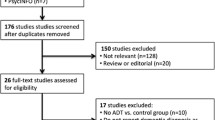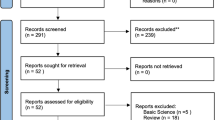Abstract
Purpose
Case reports and anecdotal experiences suggest that some men develop parkinsonism after initiating androgen deprivation therapy (ADT) for the treatment of prostate cancer, possibly due to neurophysiological effects of changes in testosterone and/or estrogen. We hypothesized that ADT would increase the risk of parkinsonism.
Methods
Using linked administrative databases in Ontario, Canada, men age 40 or older with prostate cancer on continuous ADT for at least 6 months or who underwent bilateral orchiectomy (n = 38,931) were matched 1:1 with men with prostate cancer who had never received ADT. Treated and untreated groups were range-matched on age at index date and year of diagnosis, and propensity-matched on comorbidities, medications, cardiovascular risk factors, and socio-economic variables. A competing risk analysis was conducted where the primary outcome was time to a new diagnosis of parkinsonism.
Results
The cohort was followed for a mean of 5.76 years. Based on the results from the multivariable cause-specific hazard regression model, the adjusted relative rate of experiencing parkinsonism among ADT users compared to non-users was 0.74 (95% confidence interval (CI) 0.67–0.83, p < 0.0001). The adjusted relative rate of experiencing the competing event of death among ADT users compared to non-users was 1.33 (95% CI 1.30–1.36, p < 0.0001). The 5-year incidence of parkinsonism was 1.03% in ADT users versus 1.56% in non-users.
Conclusion
Contrary to our hypothesis, continuous ADT use for at least 6 months in men with prostate cancer was not associated with an increased risk of parkinsonism after accounting for the substantial competing risk of death.
Similar content being viewed by others
References
Elshaikh MA, Underwood W, Soto DE (2009) Androgen deprivation therapy for patients with prostate carcinoma and Parkinson’s disease: case report and review of literature. Can J Urol 16:4495–4497
Mitchell E, Thomas D, Burnet R (2006) Testosterone improves motor function in Parkinson’s disease. J Clin Neurosci Off J Neurosurg Soc Australas 13:133–136. doi:10.1016/j.jocn.2005.02.014
Latourelle JC, Dybdahl M, Destefano AL et al (2010) Risk of Parkinson’s disease after tamoxifen treatment. BMC Neurol 10:23. doi:10.1186/1471-2377-10-23
Haaxma CA, Bloem BR, Borm GF et al (2007) Gender differences in Parkinson’s disease. J Neurol Neurosurg Psychiatry 78:819–824. doi:10.1136/jnnp.2006.103788
Marras C, Herrmann N, Anderson GM et al (2012) Atypical antipsychotic use and parkinsonism in dementia: effects of drug, dose, and sex. Am J Geriatr Pharmacother 10:381–389. doi:10.1016/j.amjopharm.2012.11.001
Savica R, Grossardt BR, Bower JH et al (2013) Incidence and pathology of synucleinopathies and tauopathies related to parkinsonism. JAMA Neurol 70:859–866. doi:10.1001/jamaneurol.2013.114
Khasnavis S, Ghosh A, Roy A, Pahan K (2013) Castration induces Parkinson disease pathologies in young male mice via inducible nitric-oxide synthase. J Biol Chem 288:20843–20855. doi:10.1074/jbc.M112.443556
Morissette M, Sweidi SA, Callier S, Di Paolo T (2008) Estrogen and SERM neuroprotection in animal models of Parkinson’s disease. Mol Cell Endocrinol 290:60–69. doi:10.1016/j.mce.2008.04.008
Bourque M, Dluzen DE, Di Paolo T (2009) Neuroprotective actions of sex steroids in Parkinson’s disease. Front Neuroendocrinol 30:142–157. doi:10.1016/j.yfrne.2009.04.014
Leranth C, Roth RH, Elsworth JD et al (2000) Estrogen is essential for maintaining nigrostriatal dopamine neurons in primates: implications for Parkinson’s disease and memory. J Neurosci Off J Soc Neurosci 20:8604–8609
Gillies GE, McArthur S (2010) Independent influences of sex steroids of systemic and central origin in a rat model of Parkinson’s disease: a contribution to sex-specific neuroprotection by estrogens. Horm Behav 57:23–34. doi:10.1016/j.yhbeh.2009.06.002
Naftolin F (1994) Brain aromatization of androgens. J Reprod Med 39:257–261
Roselli CE, Liu M, Hurn PD (2009) Brain aromatization: classical roles and new perspectives. Semin Reprod Med 27:207–217. doi:10.1055/s-0029-1216274
Stoffel-Wagner B (2003) Neurosteroid biosynthesis in the human brain and its clinical implications. Ann N Y Acad Sci 1007:64–78. doi:10.1196/annals.1286.007
Fokidis HB, Adomat HH, Kharmate G et al (2015) Regulation of local steroidogenesis in the brain and in prostate cancer: lessons learned from interdisciplinary collaboration. Front Neuroendocrinol 36:108–129. doi:10.1016/j.yfrne.2014.08.005
Finkelstein JS, Yu EW, Burnett-Bowie S-AM (2013) Gonadal steroids and body composition, strength, and sexual function in men. N Engl J Med 369:2457. doi:10.1056/NEJMc1313169
Alibhai SMH, Duong-Hua M, Sutradhar R et al (2009) Impact of androgen deprivation therapy on cardiovascular disease and diabetes. J Clin Oncol Off J Am Soc Clin Oncol 27:3452–3458. doi:10.1200/JCO.2008.20.0923
Butt DA, Tu K, Young J et al (2014) A validation study of administrative data algorithms to identify patients with Parkinsonism with prevalence and incidence trends. Neuroepidemiology 43:28–37. doi:10.1159/000365590
Putter H, Fiocco M, Geskus RB (2007) Tutorial in biostatistics: competing risks and multi-state models. Stat Med 26:2389–2430. doi:10.1002/sim.2712
Latouche A, Allignol A, Beyersmann J et al (2013) A competing risks analysis should report results on all cause-specific hazards and cumulative incidence functions. J Clin Epidemiol 66:648–653. doi:10.1016/j.jclinepi.2012.09.017
Lau B, Cole SR, Gange SJ (2009) Competing risk regression models for epidemiologic data. Am J Epidemiol 170:244–256. doi:10.1093/aje/kwp107
Fine JP, Gray RJ (1999) A Proportional hazards model for the subdistribution of a competing risk. J Am Stat Assoc 94:496–509. doi:10.1080/01621459.1999.10474144
Sutradhar R, Baxter NN, Austin PC (2016) Terminating observation within matched pairs of subjects in a matched cohort analysis: a Monte Carlo simulation study. Stat Med 35:294–304. doi:10.1002/sim.6621
Meng MV, Grossfeld GD, Sadetsky N et al (2002) Contemporary patterns of androgen deprivation therapy use for newly diagnosed prostate cancer. Urology 60:7–11 (discussion 11–12)
Shahinian VB, Kuo Y, Freeman JL et al (2005) Increasing use of gonadotropin-releasing hormone agonists for the treatment of localized prostate carcinoma. Cancer 103:1615–1624. doi:10.1002/cncr.20955
Papapetropoulos S, Ellul J, Argyriou AA et al (2004) The effect of vascular disease on late onset Parkinson’s disease. Eur J Neurol 11:231–235. doi:10.1046/j.1468-1331.2003.00748.x
Malek N, Lawton MA, Swallow DMA et al (2016) Vascular disease and vascular risk factors in relation to motor features and cognition in early Parkinson’s disease: vascular disease and vascular risk factors in PD. Mov Disord. doi:10.1002/mds.26698
Van Den Eeden SK (2003) Incidence of Parkinson’s disease: variation by age, gender, and race/ethnicity. Am J Epidemiol 157:1015–1022. doi:10.1093/aje/kwg068
Hirsch L, Jette N, Frolkis A et al (2016) The incidence of Parkinson’s disease: a systematic review and meta-analysis. Neuroepidemiology 46:292–300. doi:10.1159/000445751
Ng R, Maxwell CJ, Yates EA et al (2015) Brain disorders in Ontario: prevalence, incidence and costs from health administrative data. Institute for Clinical Evaluative Sciences, Toronto, ON
Wong SL, Gilmour H, Ramage-Morin PL (2014) Parkinson’s disease: prevalence, diagnosis and impact. Health Rep 25:10–14
Chung SD, Lin HC, Tsai MC et al (2016) Androgen deprivation therapy did not increase the risk of Alzheimer’s and Parkinson’s disease in patients with prostate cancer. Andrology 4:481–485. doi:10.1111/andr.12187
Author contributions
JWSY Project development, data analysis, and manuscript writing/editing. RS Project development, data analysis, and manuscript writing/editing. JR Data collection/management, data analysis, and manuscript writing/editing. CM Project development and manuscript writing/editing. NF Project development and manuscript writing/editing. SMHA Project development, data analysis, and manuscript writing/editing.
Author information
Authors and Affiliations
Corresponding author
Ethics declarations
Conflict of interest
The authors declare that they have no conflict of interest.
Ethical standards
Ethics approval was obtained from the University Health Network. As all data were anonymized from existing databases and results were presented in aggregate; the requirement for informed consent was waived.
Funding/support
Financial support was provided in part by the Toronto General & Toronto Western Hospital Research Foundation.
Electronic supplementary material
Below is the link to the electronic supplementary material.
Rights and permissions
About this article
Cite this article
Young, J.W.S., Sutradhar, R., Rangrej, J. et al. Androgen deprivation therapy and the risk of parkinsonism in men with prostate cancer. World J Urol 35, 1417–1423 (2017). https://doi.org/10.1007/s00345-017-2010-z
Received:
Accepted:
Published:
Issue Date:
DOI: https://doi.org/10.1007/s00345-017-2010-z




